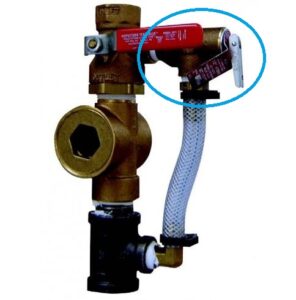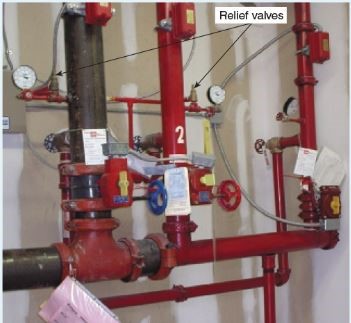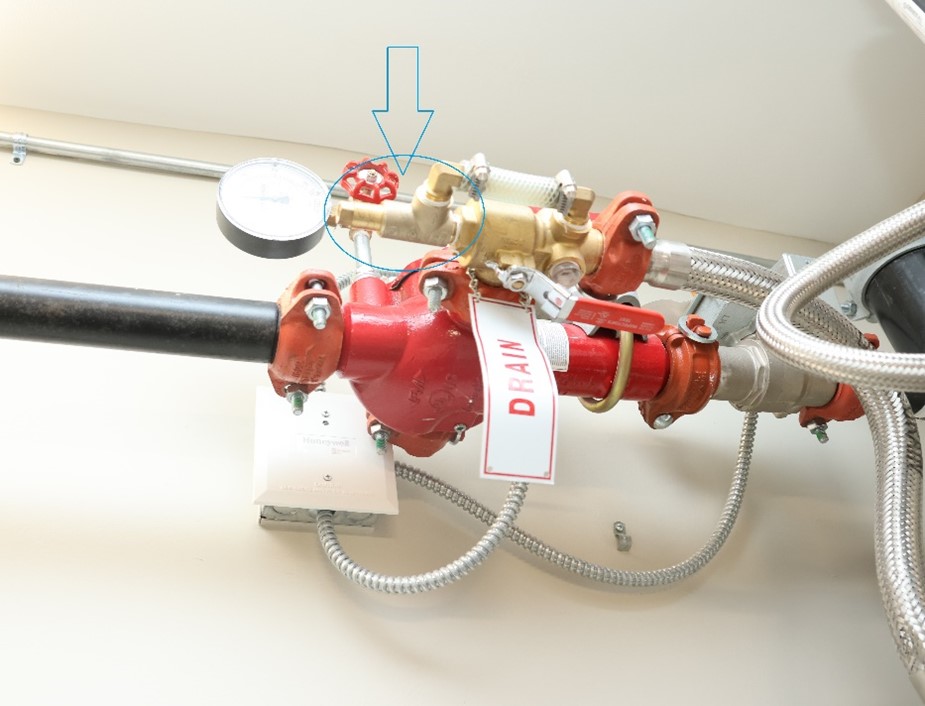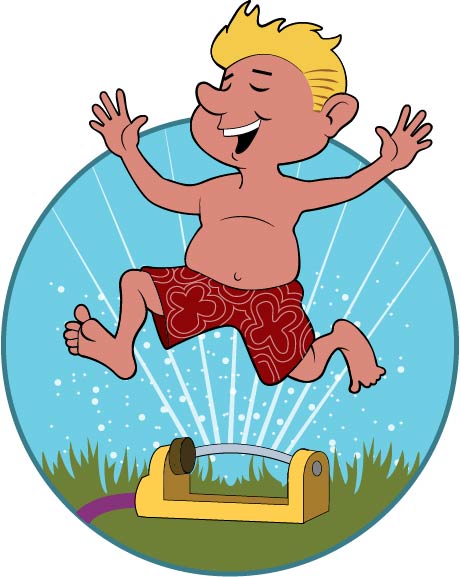Ah, summertime. Summer’s heat brings some good things: opportunities for outdoor swimming and seasonal produce: blueberries, and peaches, and watermelon…
Summer’s heat doesn’t bring all good things. It can even trigger issues with fire sprinkler systems. Let’s zoom in on a small component on a wet fire sprinkler system that’s there in part because of summer heating: a pressure relief valve.
A pressure relief valve (or an auxiliary air reservoir) is required on wet sprinkler systems; one reason is to relieve pressure increase caused by temperature increase. Greatly oversimplified, in a closed system there could be roughly a 4 psi increase for every 1°F of temperature increase. Using that rule of thumb, a system that may be at 70°F in cooler times can experience a pressure increase of 120 psi if the temperature rises to 100°F. Since we don’t want the sprinklers to experience pressure greater than what they’re rated for (175 psi is the most common), a PRV should relieve any pressure above 175 psi.
Don’t sweat occasional drips from sprinkler system drains or inspector’s test outlets where there is a PRV located, especially if these drips coincide with hot days. In such an instance it would seem that a PRV is working correctly to relieve pressure increase caused by temperature increase.
The main drain at a sprinkler riser may collect water from various places, so water seen dripping from a main drain may not only be from a PRV.
Be conscious of the areas where water is draining to; there could be slip, trip, and fall risks due to slimy or wet surfaces where water discharges often.
Small pressure relief valves don’t have stellar reputations for being the most reliable devices. They can stick open, they can stick closed, or their adjustment can be out.
Symptoms of a PRV stuck open, or set too low, or system pressure too high:
- False activation of water flow alarms
- Water dripping or flowing fairly constantly from a drain or inspector’s test
- Increased frequency of jockey pump running (if a system has one).
Possible fixes:
- Replace the PRV
- Adjust the PRV. The standard PRV installed on wet sprinkler systems is not adjustable, but pre-set to 175 psi. So, this option may first require the PRV to be replaced with an adjustable type.
- If there’s a fire pump and jockey pump on your system, a more holistic review of all start/stop pressure settings and pressure relief settings may be needed.
These small pressure relief valves will most likely be in one of two places: 1) at the sprinkler riser (or floor control valve for a multi-story building) or 2) at an inspector’s test connection. They simply need to be located downstream from any check valve on the system.
So keep an eye on the system-side pressure gauges and drains on your wet sprinkler systems in the heat of the summer. If the pressure is getting above 175 psi, it may be due to a PRV that is not opening when it should, and overpressure could ultimately result in a sprinkler operating prematurely.
It would be ideal if the only sprinklers running water in the summer are those in your yard!
Amy Anderson, PE, CFEI, has a Bachelor of Science in Chemical Engineering from Clemson University and is a licensed Professional Engineer in Fire Protection, as well as a Certified Fire and Explosion Investigator. Amy has over 20 years of engineering experience including property loss prevention engineering specializing in fire protection, chemical and pharmaceutical facilities. She has partnered with clients to identify, assess, avoid, and reduce risk at their commercial and industrial properties. Additionally, she has assisted with the development of building and fire protection specifications, reviewed plans and performed site visits. She has reviewed project documents for compliance with applicable standards – construction, fire protection, process, and combustible dust hazards. Amy is a member of the National Association of Fire Investigators, the Society of Fire Protection Engineers, the National Fire Protection Association and the American Institute of Chemical Engineers.







